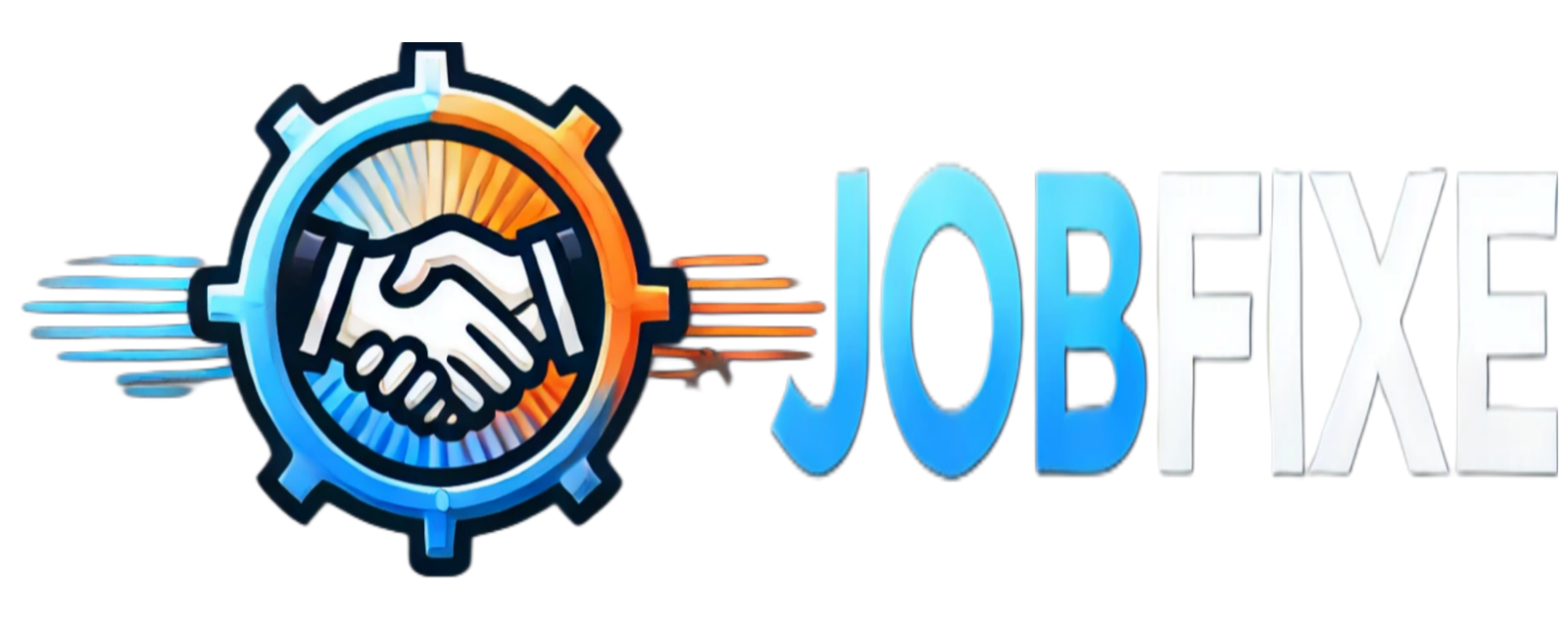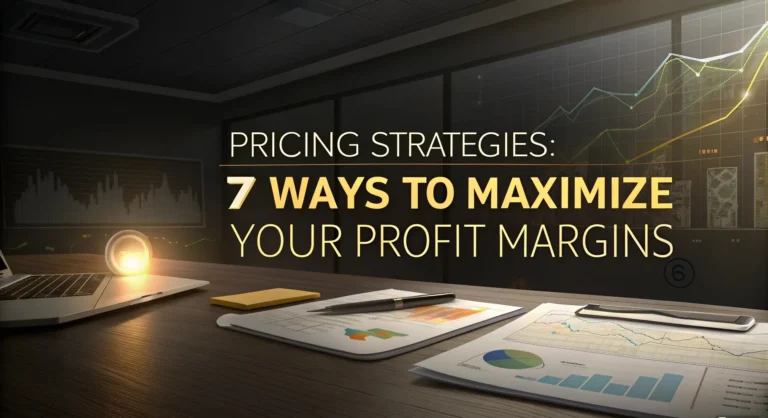9 LinkedIn Profile Skills That Make Recruiters Click
Table of Contents
Introduction: The LinkedIn Revolution in Job Searching
In today’s hyperconnected professional world, your LinkedIn profile has become more than just a digital resume—it’s your professional storefront, your brand headquarters, and often, your first impression on potential employers. As a career strategist with over a decade of experience helping professionals land their dream jobs, I’ve witnessed firsthand how a well-optimized LinkedIn profile can transform a stagnant job search into a steady stream of opportunities.
Consider this: recruiters spend approximately 7.4 seconds scanning a profile before deciding whether to engage further. In those crucial moments, your LinkedIn profile needs to not just catch attention—it needs to hold it. The challenge isn’t just about being visible; it’s about being memorable and, most importantly, recruitable.
This comprehensive guide will dive deep into the nine essential LinkedIn profile skills that consistently capture recruiter attention. Whether you’re a recent graduate stepping into the professional world or a seasoned executive looking to advance your career, these strategies will help you transform your profile from overlooked to in-demand.
The Evolution of Professional Networking
The Digital Transformation of Job Searching
The traditional job search paradigm has undergone a radical transformation. Gone are the days when submitting resumes and waiting for callbacks was the primary path to employment. Today’s recruitment landscape is proactive, digital-first, and heavily reliant on professional networking platforms—with LinkedIn leading the charge.
Why LinkedIn Matters More Than Ever
LinkedIn’s significance extends beyond its 875+ million users. It’s where:
- 87% of recruiters regularly source candidates
- 75% of hiring managers check candidates’ profiles before interviews
- 95% of Fortune 500 companies use LinkedIn for recruitment
This platform has become the de facto professional networking space, making your LinkedIn profile arguably more important than your resume in the initial stages of job searching.
The Science Behind Recruiter Behavior
Understanding Modern Recruitment Practices
Before diving into specific skills, it’s crucial to understand how recruiters use LinkedIn. Modern recruiters:
- Use Boolean search strings to find candidates
- Rely on LinkedIn’s algorithm to surface relevant profiles
- Look for specific indicators of professional credibility
- Screen candidates based on activity and engagement
- Evaluate profiles for cultural fit and soft skills
The Psychology of Profile Evaluation
Recruiters follow specific patterns when evaluating profiles:
- Visual assessment (profile picture, banner)
- A quick scan of the headline and summary
- Review of recent experience
- Assessment of skills and endorsements
- Evaluation of network quality and engagement
The 9 Essential LinkedIn Profile Skills
1. Strategic Keyword Optimization
The Foundation of Visibility
Keyword optimization is the cornerstone of LinkedIn visibility. It’s not just about stuffing your profile with industry terms—it’s about strategic placement and natural integration.
Key Areas for Keyword Placement:
- Headline (220 characters)
- About section (2,600 characters)
- Experience descriptions
- Skills section
- Custom URL
Best Practices:
- Research industry-specific keywords using job descriptions
- Include both technical and soft skills
- Use variations of key terms
- Incorporate location-specific keywords
- Balance keyword density with readability
Implementation Strategy:
- Audit top performers’ profiles in your industry
- Create a keyword master list
- Prioritize terms based on search volume
- Integrate naturally throughout your profile
- Review and update quarterly
2. Achievement Quantification
The Power of Numbers
Quantifying achievements transforms vague statements into compelling evidence of your capabilities.
Components of Strong Achievement Statements:
- Specific metrics
- Time frames
- Scale of impact
- Business outcomes
- Technical details
Formula for Achievement Statements:
Action Verb + Specific Task + Measurable Result
Examples:
- “Increased team productivity by 35% through implementation of Agile methodologies”
- “Generated $1.2M in new revenue through strategic account management”
- “Led cross-functional team of 15 members across 3 continents”
3. Personal Branding Articulation
Crafting Your Professional Narrative
Your brand must be consistent, authentic, and memorable.
Elements of Strong Personal Branding:
- Clear value proposition
- Consistent voice and tone
- Industry expertise demonstration
- Unique professional perspective
- Visual consistency
Development Process:
- Define your professional identity
- Identify your target audience
- Craft your brand message
- Create content strategy
- Maintain brand consistency
4. Network Cultivation
Building Strategic Connections
Quality trumps quantity in professional networking.
Network Building Strategies:
- Target industry leaders
- Connect with decision-makers
- Engage with content regularly
- Participate in groups
- Share valuable insights
Networking Calendar:
- Daily: Engage with 3-5 posts
- Weekly: Share 1-2 original posts
- Monthly: Write 1 long-form article
- Quarterly: Review and prune connections
5. Content Creation
Establishing Thought Leadership
Content creation positions you as an industry expert.
Content Types:
- Industry insights
- Career advice
- Technical tutorials
- Case studies
- Company culture posts
Content Strategy:
- Define your niche
- Create content calendar
- Mix content formats
- Engage with comments
- Track performance
6. Engagement Tactics
Maximizing Profile Activity
Strategic engagement increases visibility and credibility.
Engagement Methods:
- Thoughtful comments
- Post-sharing with insights
- Group participation
- Mentioning others
- Celebrating others’ achievements
Engagement Schedule:
- Morning: Industry news engagement
- Afternoon: Peer content interaction
- Evening: Original content posting
7. Multimedia Integration
Visual Storytelling
Multi-media elements make your profile more engaging and memorable.
Types of Media:
- Project presentations
- Video introductions
- Work samples
- Certifications
- Speaking engagements
Implementation Guide:
- Audit existing materials
- Create new content
- Organize by relevance
- Update regularly
- Monitor engagement
8. Endorsement Management
Credibility Building
Strategic endorsements validate your expertise.
Endorsement Strategy:
- Prioritize relevant skills
- Request specific endorsements
- Reciprocate thoughtfully
- Hide irrelevant endorsements
- Update skill list quarterly
9. Activity Optimization
Maintaining Consistent Presence
Regular, meaningful activity keeps your profile visible.
Activity Planning:
- Content sharing schedule
- Engagement patterns
- Group participation
- Comment strategies
- Profile updates
Advanced Implementation Strategies
Experience Level Adaptations
Entry-Level Professionals
- Focus on education and internships
- Highlight relevant coursework
- Showcase projects and volunteering
- Emphasize soft skills
- Build academic and professional references
Mid-Career Professionals
- Emphasize leadership experience
- Showcase industry expertise
- Highlight cross-functional skills
- Demonstrate career progression
- Focus on measurable impacts
Executive Level
- Focus on strategic vision
- Highlight organizational impact
- Showcase thought leadership
- Emphasize board and advisory roles
- Demonstrate industry influence
Industry-Specific Considerations
Technology Sector
- Technical skill documentation
- Project portfolio links
- GitHub integration
- Certification showcase
- Innovation highlights
Creative Industries
- Portfolio integration
- Visual content emphasis
- Project storytelling
- Client testimonials
- Creative process insights
Professional Services
- Client success stories
- Industry publications
- Speaking engagements
- Advisory roles
- Thought leadership content
Measuring Success
Key Performance Indicators
Profile Views
- Weekly view trends
- Viewer demographics
- Industry relevance
- Geographic distribution
- View-to-connection ratio
Search Appearances
- Search keyword analysis
- Industry relevance
- Position alignment
- Geographic reach
- Recruiter views
Engagement Metrics
- Post reach
- Comment quality
- Share frequency
- Connection requests
- Message response rate
Troubleshooting Common Issues
Problem-Solving Guide
Low Profile Views
- Keyword audit
- Content review
- Activity assessment
- Network analysis
- Profile completion check
Poor Engagement
- Content quality review
- Posting schedule analysis
- Network relevance check
- Engagement strategy adjustment
- Value proposition assessment
Maintenance and Updates
Regular Profile Maintenance
Weekly Tasks
- Engage with network content
- Share industry insights
- Respond to messages
- Connect with new professionals
- Update activity status
Monthly Tasks
- Review and update the current role
- Add new achievements
- Update skills section
- Review recommendations
- Audit engagement metrics
Quarterly Tasks
- Comprehensive profile review
- Keyword optimization check
- Network audit
- Content strategy review
- Success metric analysis
Future Trends and Adaptations
Emerging LinkedIn Features
- Stay informed about new features
- Adapt strategy for algorithm changes
- Integrate new content formats
- Explore new engagement tools
- Monitor industry trends
Professional Networking Evolution
- Virtual networking trends
- Remote work implications
- Industry-specific changes
- Technology integration
- Personal branding evolution
Conclusion
Your LinkedIn profile is a living document that requires consistent attention and strategic optimization. By mastering these nine essential skills, you’re not just improving your profile—you’re investing in your professional future. Remember, success on LinkedIn isn’t about gaming the system; it’s about authentically presenting your professional story in a way that resonates with your target audience.
Start implementing these strategies today, but remember to be patient and consistent. Track your results, adjust your approach based on data, and continue to evolve your profile as your career grows. The most successful professionals on LinkedIn are those who view their profile as an ongoing project rather than a one-time setup.
Ready to transform your LinkedIn presence? Begin with one skill at a time, measure your results, and build upon your successes. Join the thousands of professionals who have used these strategies to advance their careers and attract their dream opportunities.
Remember: Your LinkedIn profile is often your first impression in the professional world. Make it count.
Additional Resources
Recommended Tools
- LinkedIn Premium features
- Profile analysis tools
- Content scheduling platforms
- Network management systems
- Engagement tracking tools
Further Reading
- LinkedIn’s official blog
- Industry thought leaders
- Career development resources
- Personal branding guides
- Professional networking strategies
Your success on LinkedIn is a journey, not a destination. Keep learning, keep optimizing, and keep engaging with your professional community.








9 Comments